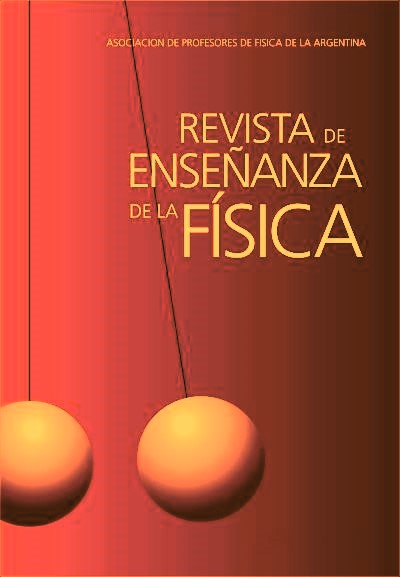Customized assessments and assignments in phys-ics: An R and LaTeX-based workflow for learning electric fields
DOI:
https://doi.org/10.55767/2451.6007.v36.n1.45317Keywords:
Electromagnetism, Electric Field, Physics Assessment, Problem Generation, LaTeXAbstract
This article introduces an educational resource designed to enhance the teaching and assessment of electromagnetism, focusing specifically on the concept of electric fields. Through a workflow that integrates R Markdown and LaTeX, it facilitates the creation of varied problems with random values. This tool is particularly useful for generating practice materials and exams, allowing for effective assessment of students' understanding in various physical situations. The automatic generation of PDF documents ready for use in educational settings demonstrates the resource's versatility and efficiency. Capable of covering topics from the electric field generated by point charges to the motion of an electron in a uniform field, this resource is suitable for intermediate-level university electromagnetism courses. Its implementation not only saves teachers time in material preparation but also enriches the learning process for students, providing them with resources for a solid preparation.
References
Allaire J., Xie Y., Dervieux C., McPherson J., Luraschi J., Ushey K., Atkins A., Wickham H., Cheng J., Chang W., Iannone R. (2023). rmarkdown: Dynamic Documents for R. Recuperado de https://github.com/rstudio/rmarkdown
Barniol, P. y Zavala, G. (2014). Evaluación del entendimiento de los estudiantes en la representación vectorial utili-zando un test con opciones múltiples en español. Revista mexicana de física E, 60(2), 86–102.
Bettina, G. y Achim, Z. (2009). Automatic Generation of Exams in R. Journal of Statistical Software, 29(10), 1-14. doi:10.18637/jss.v029.i10
Feynman, R., Leighton, R., y Sands, M. (1999). Física Volumen 2: Electromagnetismo y Materia (Edición revisada). Méxi-co: Addison Wesley Longman.
Fraser, J., Timan, A., Miller, K., Dowd, J., Tucker, L., y Mazur, E. (2014). Teaching and physics education research: Bridg-ing the gap. Reports on Progress in Physics, 77(3), 032401. doi:10.1088/0034-4885/77/3/032401
Griffiths, D. J. (2013). Introduction to Electrodynamics (4th ed.). Boston, USA: Pearson.
Hestenes, D., Wells, M., y Swackhamer, G. (1992). Force concept inventory. The Physics Teacher, 30(3), 141–158. doi:10.1119/1.2343497
Ooms, J. (2023). pdftools: Text Extraction, Rendering and Converting of PDF Documents. (3.4.0) [Software]. https://cran.r-project.org/web/packages/pdftools/index.html
R Core Team (2023). R: A Language and Environment for Statistical Computing. R Foundation for Statistical Computing, Vienna, Austria. Recuperado de https://www.R-project.org/
Tecpan, S., Benegas, J., y Zavala, G. (2015). Entendimiento conceptual y dificultades de aprendizaje de Electricidad y Magnetismo identificadas por profesores. Latin-American Journal of Physics Education, 9(E1), 4.
Wieman, C. E. (2014). Large-scale comparison of science teaching methods sends clear message. Proceedings of the National Academy of Sciences, 111(23), 8319–8320. doi:10.1073/pnas.1407304111
Yihui, X. (2023). knitr: A General-Purpose Package for Dynamic Report Generation in R. Recuperado de https://yihui.org/knitr/
Young, H. y Freedman, R. (2018) Física Universitaria con Física Moderna. Volumen 2. 14a Ed. México: Pearson Educación.
Published
How to Cite
Issue
Section
License

This work is licensed under a Creative Commons Attribution-NonCommercial-NoDerivatives 4.0 International License.
Aquellos autores/as que tengan publicaciones con esta revista, aceptan los términos siguientes:Los autores/as conservarán sus derechos de copiar y redistribuir el material, bajo los términos estipulados en la Licencia de reconocimiento, no comercial, sin obras derivadas de Creative Commons que permite a terceros compartir la obra bajo las siguientes condiciones:
- Reconocimiento — Debe reconocer adecuadamente la autoría, proporcionar un enlace a la licencia e indicar si se han realizado cambios. Puede hacerlo de cualquier manera razonable, pero no de una manera que sugiera que tiene el apoyo del licenciador o lo recibe por el uso que hace.
- NoComercial — No puede utilizar el material para una finalidad comercial.
- SinObraDerivada — Si remezcla, transforma o crea a partir del material, no puede difundir el material modificado.
- Los autores/as podrán adoptar otros acuerdos de licencia no exclusiva de distribución de la versión de la obra publicada (p. ej.: depositarla en un archivo telemático institucional o publicarla en un volumen monográfico) siempre que se indique la publicación inicial en esta revista.
- Se permite y recomienda a los autores/as difundir su obra a través de Internet (p. ej.: en archivos telemáticos institucionales o en su página web) antes y durante el proceso de envío, lo cual puede producir intercambios interesantes y aumentar las citas de la obra publicada. (Véase El efecto del acceso abierto).














